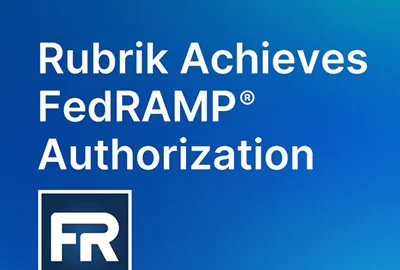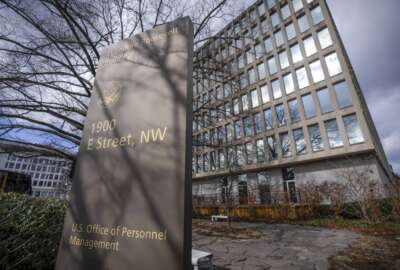Cloud Exchange 2022: Federal CIO Clare Martorana on why cloud computing and CX go hand in hand
“Better customer experience can be delivered via cloud solutions.” We talk to the government’s top techie, Clare Martorana, during Federal News Network’s...
“Digital transformation, IT modernization, cybersecurity, delivering services to our customer — they’re all part of an ecosystem,” Federal Chief Information Officer Clare Martorana said during the Federal News Network Cloud Exchange 2022. In a sense, she said, improved customer experience is the goal of the other initiatives, including cloud.
Providing better service to constituents has been a priority of administrations going back to the 1980s. The Biden administration is the most recent team to push along this management agenda item, as expressed in its customer experience executive order from December 2021.
The order notes the continuous nature of improving CX. Each generation of technology enables new approaches to CX and better service generally. The latest EO recognizes that cloud computing has become integral to federal IT and to the services deployed by agencies.
Martorana emphasized these points and noted that the CX drive builds on a continuum of technology initiatives.
Build on customer experience work already underway
The executive order, Martorana said, didn’t issue from the White House as a commandment from on high. Rather, it originated in large measure from work already going on across the government, especially at what the EO calls high-impact service providers such as the Department of Veterans Affairs and the IRS.
“What the CX executive order really did is build on this work across multiple administrations,” Martorana said.
And the order calls on agencies to think about systems from the point of view of constituents. That, she said, requires “thinking about the journey that they go on, either interacting with a single agency … as well as thinking about the life experiences that are most common for Americans interacting with government.”
Martorana noted that regardless of whether a department, agency or bureau is designated as a high-impact service provider for the purposes of the executive order, any given federal service is crucial to those that depend on it.
Improving customer experience, she said, has an external and an internal component. Externally, applications must follow each visitor’s intended journey. This is where journey mapping and human-centered interface design come in. Internally, agencies must ensure security and reliability of the systems supporting customer-facing services, she added.
“We think about it from a cybersecurity perspective, how safe and secure and resilient these programs are,” Martorana said.
Technical approaches to improving CX may vary. But regardless, it’s a team effort. The executive order specifically calls for engagement of senior leadership — “making sure we have the right people at the table: the [financial] team, the policy, legal and comms teams,” she said. “All of these people coming together with program offices, making sure that we are thinking about this user journey, this life experience, in a universal way.”
Martorana sees part of her own job as ensuring federal managers — who she said come to work every day to focus on the mission — have awareness of and access to new technologies and services that the private sector might have already deployed.
Think like a constituent
Beyond technology, she said, the customer experience goal requires a different way of thinking about application design.
“We used to design systems in a vacuum,” Martorana said, referring to both government and industry. “We would often have a business problem we were trying to solve. We decided we were the smartest people in the room, and we were going to design the solution.”
And today?
“The difference is in using human-centered design and working iteratively,” she said. “With technology teams, we’re actually building component pieces of the experience.”
That process includes journey maps, a technique for discovering the true requirements of a program from the intended user’s point of view.
Martorana cautioned that to be effective, a journey mapping exercise must pull together engineers, coders, designers, and program and subject matter experts. The customer experience movement also has brought a new function to the government called product management.
“Product management is really different than project management or program management,” she said. “Product management is this intersection of thinking about your business requirements, your customer needs and then thinking about the technology you need to accomplish those business and customer requirements.”
The product management approach to customer experience leads to a better understanding of which service delivery channel is best suited to meet a customer’s query, Martorana said. She cited overloaded call centers, whose operators found digital ways of answering two-thirds of the questions. That got the bulk of customer problems solved faster and freed overworked, frustrated call center employees to concentrate on calls requiring expertise.
“Being able to modernize in that way allows the people that actually need to talk to a human the ability to actually get somebody on the phone to answer their question that might be more complex,” Martorana said. “Or, frankly, they might be in a state of mind where they just need to talk to somebody.”
The iterative journey map process also aligns well to the development, security and operations (DevSecOps) approach to software development, she said. Some agencies release code daily, and they’re able to make changes and updates just as frequently, she added.
Use cloud as a CX enabler
Perhaps not surprisingly, given the government’s decade-long policy favoring commercial cloud computing, Martorana said that pretty much every form of CX except for paper can be enabled or improved by the cloud.
“My hope is that we continue to be relentless in moving to the cloud, adopting new technologies, so that we are able to lower the volume of paper that we are processing in government,” she said.
Centralizing of data assets, for example, is a cloud use case because it enables multiple applications to more easily access a given set of data.
Plus, the cloud is the ideal location for repositories of sharable functions. Martorana said the Federal CIO Council continues to publish so-called playbooks as a way to promote best practices such as shared services.
“We’re trying to avoid starting from a blank piece of paper because any problem that we’re trying to solve in government oftentimes has been solved by someone else or through our partners in the private sector,” she said. “We’re able to use platform as a service or software as a service to speed our ability to deliver [shared] services.”
Martorana also recommended agencies seek Technology Modernization Fund dollars to help pay for new digital services and CX initiatives.
“We’ve just done a $100 million allocation for customer experience, open to all agencies, including the high-impact service providers,” She said. Although some projects received funding in August, agencies can still submit funding proposals until Sept. 30, 2022.
The TMF Board wants to particularly give aid to projects that span agencies and systems, Martorana said. TMF’s project management at the General Services Administration also accepts initial project proposals that might still be in the idea or concept stage. It’s a route for agencies to connect with project and technical managers, who can help shape proposals into submissions with a good shot at receiving TMF grants.
Metrics that matter to digital customer experience
Cloud solutions can enable easier tracking of the metrics necessary to know whether digital services and customer experience are improving, pointed out Federal CIO Clare Martorana.
She listed several questions for which agencies can pull data:
- Are call center wait times decreasing?
- Is the time from a call to issue resolution decreasing?
- What is the source of traffic?
- Where are people calling or visiting from?
- How long do they stay on the agency’s website?
- Are they clicking through to multiple pages or services?
- Are they bouncing and abandoning the site?
“Those are all standard metrics available through basic dashboards and analytics programs that we wire into every single website that that is built,” Martorana said.
Check out all the sessions from the Federal News Network Cloud Exchange 2022.
Copyright © 2025 Federal News Network. All rights reserved. This website is not intended for users located within the European Economic Area.
Tom Temin is host of the Federal Drive and has been providing insight on federal technology and management issues for more than 30 years.
Follow @tteminWFED
Related Stories
Featured speakers
-

Clare Martorana
Federal Chief Information Officer, Office of Management and Budget
-

Tom Temin
Host, The Federal Drive, Federal News Network
Upcoming Events
Related Stories
Top Stories

Clare Martorana
Federal Chief Information Officer, Office of Management and Budget

Tom Temin
Host, The Federal Drive, Federal News Network






